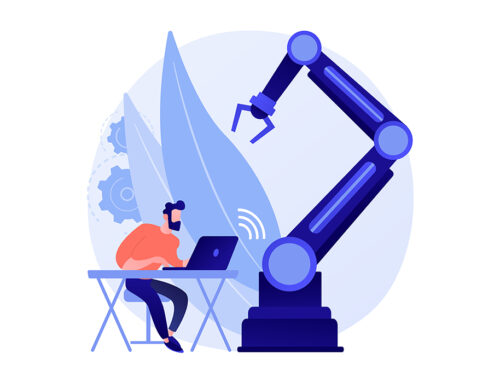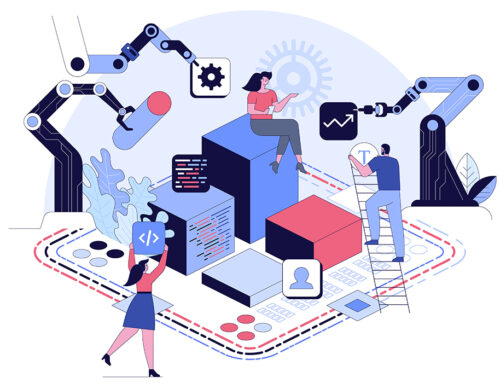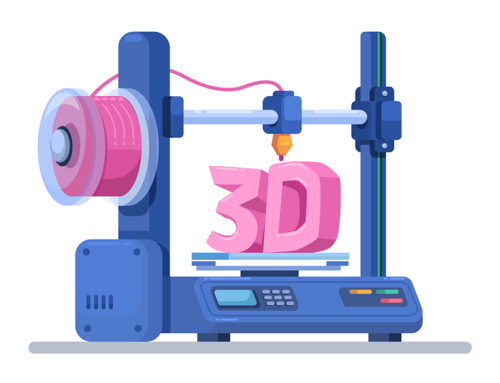Speed, efficiency, and accuracy are all key factors of a successful field service operation.
Author Nick Saraev

Photo: Freepik
However, with the vast amounts of data being utilized, it can be difficult to optimize your system. AI can be the perfect tool to sift through information and create the ideal strategies.
Lisa Hellqvist recently sat down with Frank Klomp, Michael Kleweken, and Laurin Brechter from OMD to discuss the role that AI can play in field service, and how you can start implementing it today.
The Need for Efficiency in Field Service
Over the last decade, the field service industry has undergone several major changes and shifts. Some of the major differences include
- Increased Productivity – With the rise of remote technology and tools like smartphones and Google Maps, field technicians have reached clients and solved problems far faster
- Customer Expectations – Modern clients demand high-quality, fast, personalized care from their field service workers. If your competition does sustainability or digitization better than you, you’re falling behind
- Boost in Traffic – On the practical end of things, more cars on the roads mean more traffic delays, wasting precious time in transit. The average field technician loses ten working days to traffic
- More Regulations – Companies are required to report on their safety, security, and sustainability to governing bodies more than ever before
- Competition – A globalized market means more options for your clients and more diverse competition to combat
- Employee Skill Gap – With older technicians retiring, it’s harder than ever to attract and keep new employees who expect better work-life-balance
While all these things change and shift, one thing remains constant in the field service industry; volatility, uncertainty, complexity, and ambiguity. These often boil down to two core factors, time and stress.
The field service is unique because several moving parts combine to create this stress. In one day you might deal with a key technician calling in sick, a new urgent request from a top client, and backed-up traffic that adds hours to an otherwise quick job. These stressors don’t include the general complexity of the work where you need to juggle
- Technician skills
- SLA
- Working hours
- Material
- Task groups
Bringing in AI and other digital tools helps you keep these stressors to a minimum and get more work done with less strain on your system.
Core Components of Field Service Optimization
A fully streamlined field service operation will include several digital tools and concepts. Brechter, Kleweken, and Klomp shared a few of the most important components your team should focus on.
Clustering
Clustering is a style of machine learning that involves putting a set of unlabeled data points into related groups based on their characteristics. This is key when dealing with large amounts of data and finding the optimal path forward.
For example, if a company has thousands of assets nationwide that require attention and monitoring, it can be difficult to know the best locations for service depots. You could use clustering to examine the locations of products and recalculate the most efficient service areas.
With service depots placed at the center of every service area, you can stay as close as possible to your end customers and have a jumping-off point for continued improvement of your service distribution network.
Classification
AI can take a large data set, find essential information, and automatically create groups to work with. This method improves data quality and can trigger further actions without human input.
A practical use for this tech in the field service industry is classifying notes. You can design the AI to sift through emails, texts, and field notes from technicians on the go and identify the key information your service department needs.
Let’s say a technician is on a job and reports back that the location is closed and the door is locked. Classification allows AI to tag this as a data issue on the opening hours of a client, and can automatically start a chat for the technician to report back the proper hours.
Forecast of Visit Duration
Current systems in the field service industry require repair time estimations based on individual experience or historical averages. The problem with this system is that the workload is seldom optimized because of inaccurate time forecasts.
To combat this, you can use an AI model that tracks repair time for each customer, product, and technician. Over time, this model will not only give more accurate estimations but also stay current with any changes that happen.
Intelligent Optimization
Several different algorithms and models can be used to improve your planning and scheduling. A few of the most effective ones are
- Fill-Trip – Examine your existing route and find open cases that fit into your schedule and physical journey. This reduces idle time and eliminates the need for extra trips
- Cheapest Insert – Look for opportunities to insert new tasks into your current job schedule that may reduce overall costs or increase efficiency
- Swoon Mix – Identify similar tasks or duties that can be grouped to decrease setup or transition time, thus increasing productivity
- Trip Optimization – Employ advanced algorithms to determine the most efficient sequence for tasks or jobs based on factors such as distance, time, and constraints
Your team can use a combination of these algorithms to always make the most of your technicians’ time.
Appointment Bot
Booking appointments for clients is often time-consuming and work-intensive. It can be challenging to get people together at the same time to iron out details and solve issues.
Bots can eliminate the need for coinciding schedules by de-coupling the process of scheduling and booking. The chatbot can gather all the data and information required such as what work needs to be done and when the client is available. Service agents then simply use that provided data to find a time that works.
Document Search Bot
Field technicians often work on several different types of machinery, and won’t always have the information they need top of mind. This is especially difficult when they are working remotely and need information for their current job right away.
Vital data and instructions are usually contained in complex and unstructured documents. Sifting through all this information is time-consuming and can lead to frustration and burnout.
A simple solution to this issue is a chatbot that is connected to a wide knowledge base. Mobile workers can simply ask the bot specific questions about the job they are on, and get answers in any language that are accurate and easy to understand.
Challenges With AI in Field Service
While AI can revolutionize the way your company runs, there are some potential pitfalls you should be aware of. Knowing that these issues are possible is the first step in overcoming them.
Data Is Key
Your data needs to be accurate, and up to date to properly train AI algorithms. This means going through your historical data and skill matrix and ensuring it is as clean as possible. The better your data quality is, the better your results will be.
Hallucinations
Some chat bots have been known to make up information or ignore information that exists. This can cause serious issues if your technicians are relying on bots to solve problems in the field. Be sure to use guardrails in your bot instructions to limit these hallucinations.
Infrastructure
Many field service organisations don’t have the infrastructure in place to fully utilize AI. This can include out-of-date systems, lack of data storage capabilities, and limited access to advanced technologies. Be prepared to upgrade your systems as you start your AI journey.
Conclusion
Modern field service requires modern solutions. If you want to keep up with the demands of your clients, deal with travel concerns, and ensure every employee has the information they need, AI could be the secret weapon you’re looking for.






























